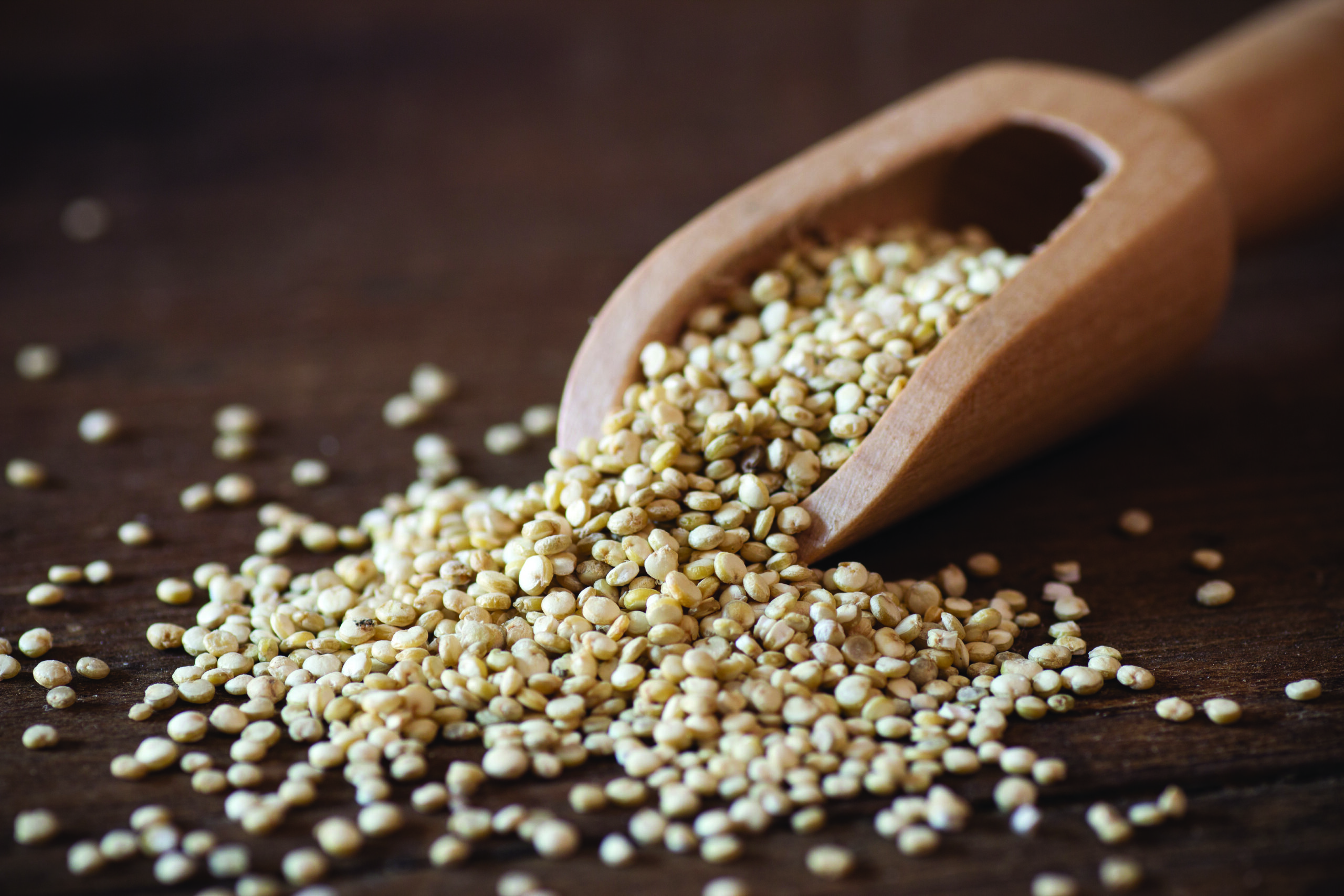I adore grains of any form. I love the coarse texture, chew, nuttiness, and wholesome, satisfying taste. When quinoa recently became popularized I quickly fell in love and today, quinoa is a staple in our house.
Many folks may not know that quinoa is not actually a grass seed like wheat. It is the seed of a plant in the same family as spinach and beets and is thus considered a “pseudo-grain”. Quinoa was cultivated and popularized first in South America, where it was a staple “grain” of the Incan Empire as far back as 1200 AD. Today there are many varieties of quinoa. While in the U.S. we are exposed mainly to red or white varieties, there are also pink, black, orange and purple strains.
Quinoa stands out among other grains and seeds for its nutritional density. Unlike many grains it contains all nine essential amino acids making it a complete protein source. It also contains more healthy fats, vitamin E, and antioxidants than many other grains. It may even have significant anti-inflammatory effects on the body. It is also high in fiber and many important vitamins and minerals like manganese, copper, phosphorous, magnesium, folate and zinc. Quinoa contains no gluten so it is a great alternative grain for those with gluten sensitivities.
Quinoa is generally cooked like rice and used in many different dishes. It cooks quickly and becomes fluffy and translucent with what appears to be little tails within it (this is the germ). It is typically added to soups or used as a base for grain salads. However it is also wonderful used as a substitute for rice in stir-fries; stuffed zucchini, peppers or eggplant dishes; in casseroles; or in puddings or breakfast porridges (see recipe below). I have also had wonderful cookies and muffins made with cooked quinoa.
Quinoa may be rolled into flakes like oats, which can be used like oats in any recipe (i.e. granola) or may be ground into flour to be used as a protein-enriched alternative to wheat flour. Many stores carry rolled quinoa and quinoa flour. However, you can make your own quinoa flour easily enough in a clean coffee grinder. Just know that baked goods made entirely of quinoa flour can be dense and taste slightly grassy. Most recipes using quinoa flour call for a blend with lighter flours like tapioca and arrowroot. This makes lighter, yet starchier, baked goods.
Quinoa contains saponins that can yield a bitter taste. To avoid this, rinse your quinoa well before cooking it. To cook quinoa, use one part grain to two parts liquid (i.e. water or broth). Cook, covered, for about 15 minutes (if overcooked quinoa can get mushy. Many like it best with a bit of bite).
The last thing I want to mention is sprouted quinoa. Lately there has been a lot of buzz in nutritional circles about phytic acid inherent to grains, nuts and seeds. Phytic acid blocks the absorption into our bodies of many of the important nutrients found in these foods. Historically, cultures intuitively knew to soak and sprout their grains in order to maximize nutritional value, but modern society has dropped this practice in favor of quick and easy preparation methods. However, soaking and sprouting grains is incredibly easy. If you are interested in sprouting quinoa, I refer you to a great online article by One Green Planet (http://www.onegreenplanet.org/vegan-food/how-to-sprout-quinoa-the-right-way/)
Pumpkin Spice Quinoa Porridge
Serves 4
INGREDIENTS:
– 1 cup quinoa, rinsed
– 1 13.5 ounce can regular or light coconut milk
– pinch of salt
– 1 teaspoon ground cinnamon
– 1/4 teaspoon ground cloves
– 1/8 teaspoon freshly ground nutmeg
– 4 pitted dates, finely minced
– 1/3 cup pumpkin puree
– 3 tablespoons toasted pumpkin seeds, optional
– 3 tablespoons pomegranate seeds, optional
METHOD:
- Place coconut milk in a 4-cup measuring vessel
- Add water to bring mixture to the 2-cup level
- Place coconut mixture in a medium saucepan and add salt, dates, cinnamon, cloves, and nutmeg. Bring to a boil.
- Add quinoa and stir well. Reduce heat to low and cover pot.
- Cook for 15 minutes. Remove lid and stir. Quinoa should be tender with a bit of bite.
Stir in pumpkin puree. Cook until porridge thickens, about 2-5 minutes. To serve, place in a bowl and drizzle with additional coconut milk if desired. Top with pumpkin and pomegranate seeds. (Porridge keeps well in the refrigerator. Reheat in the microwave or over the stovetop, adding additional liquid if needed).
Julie Wern is a psychologist turned stay-at-home-mom turned caterer. She is currently in training at the Institute of Integrative Nutrition to become a Nutrition and Wellness coach. She is the author of Holcomb Farm CSA’s Simply Fresh blog (http://holcombfarm.org/blog) and currently teaches cooking and cookie decorating classes. Contact Julie at jwern@comcast.net for comments and inquiries.
